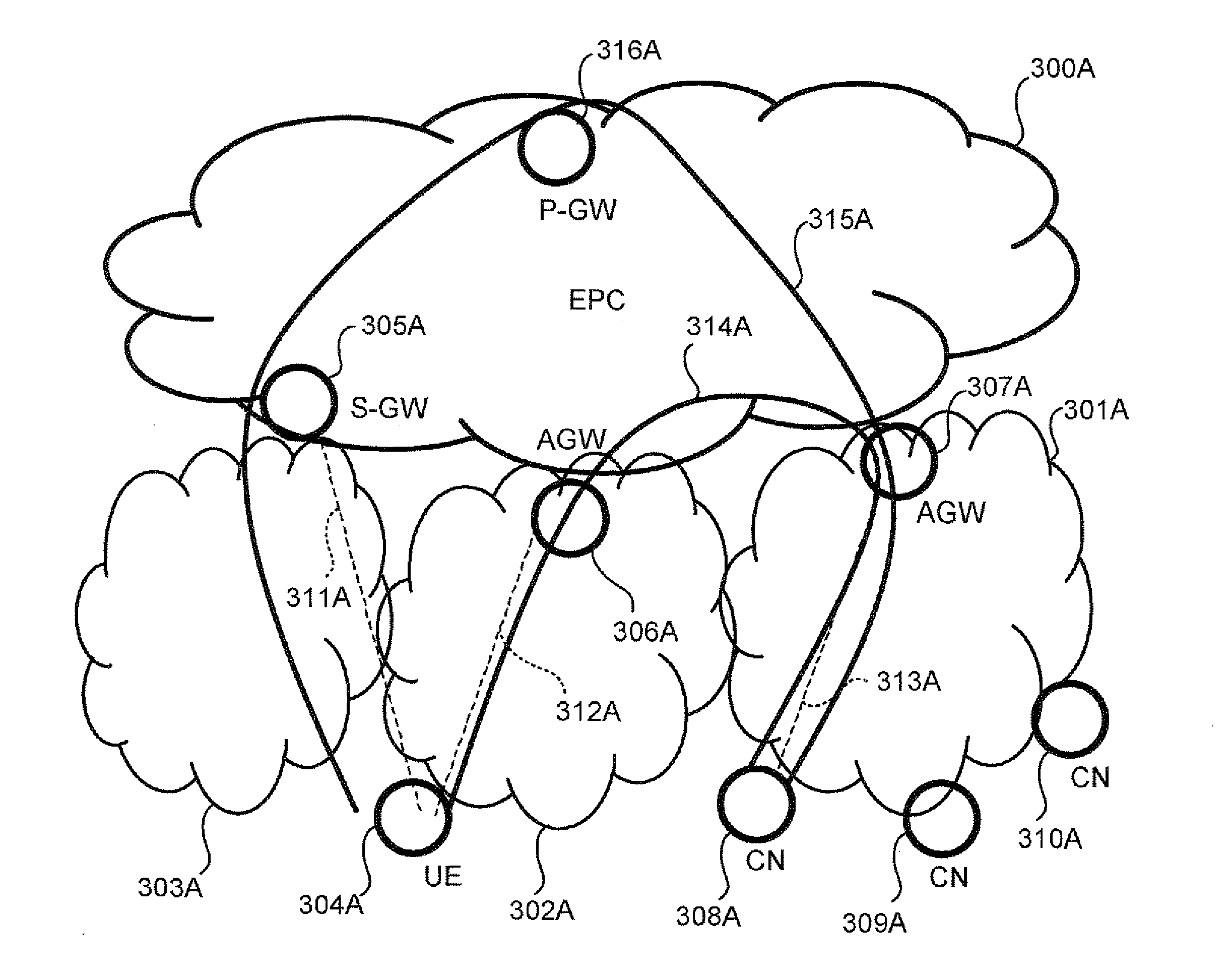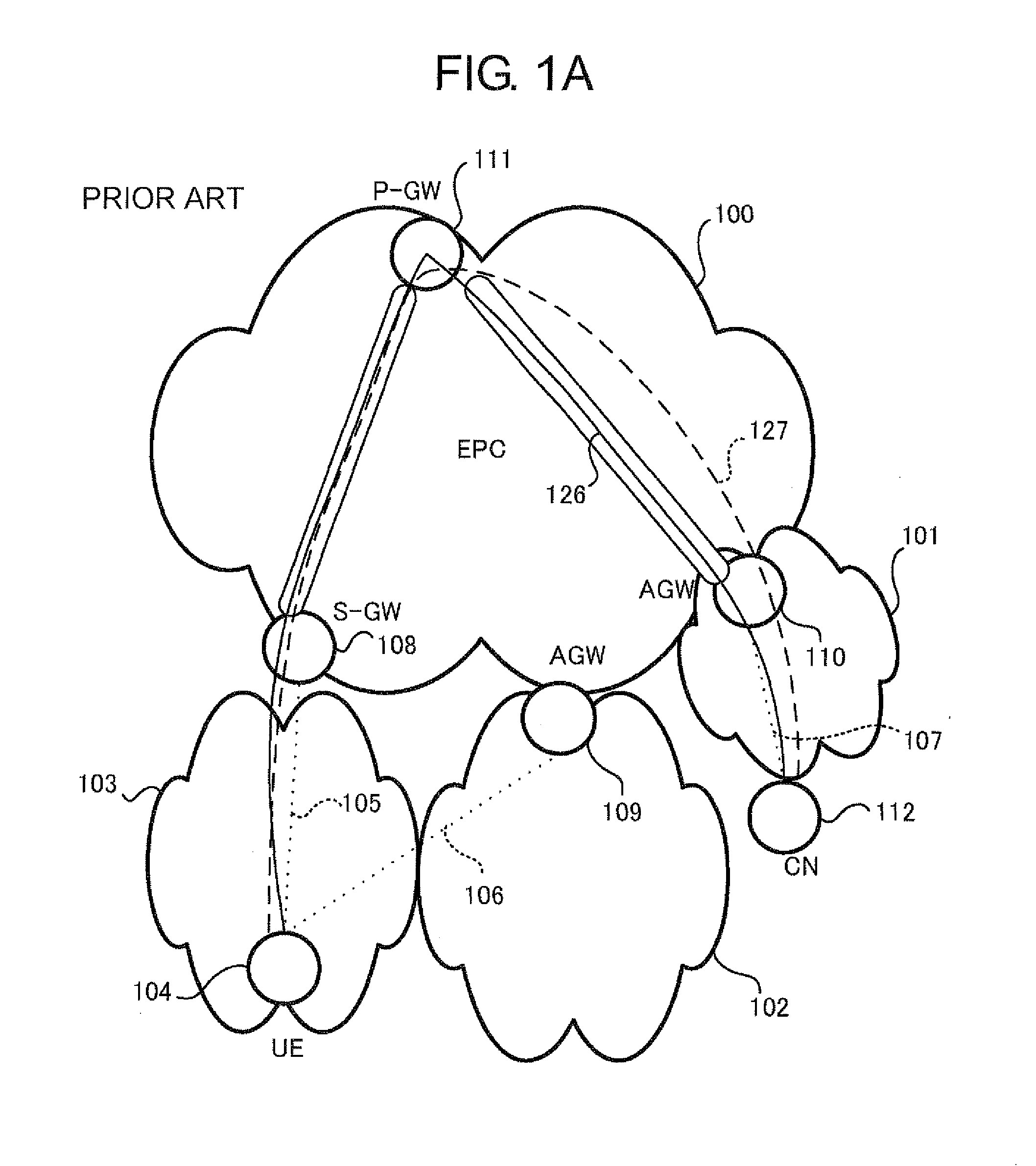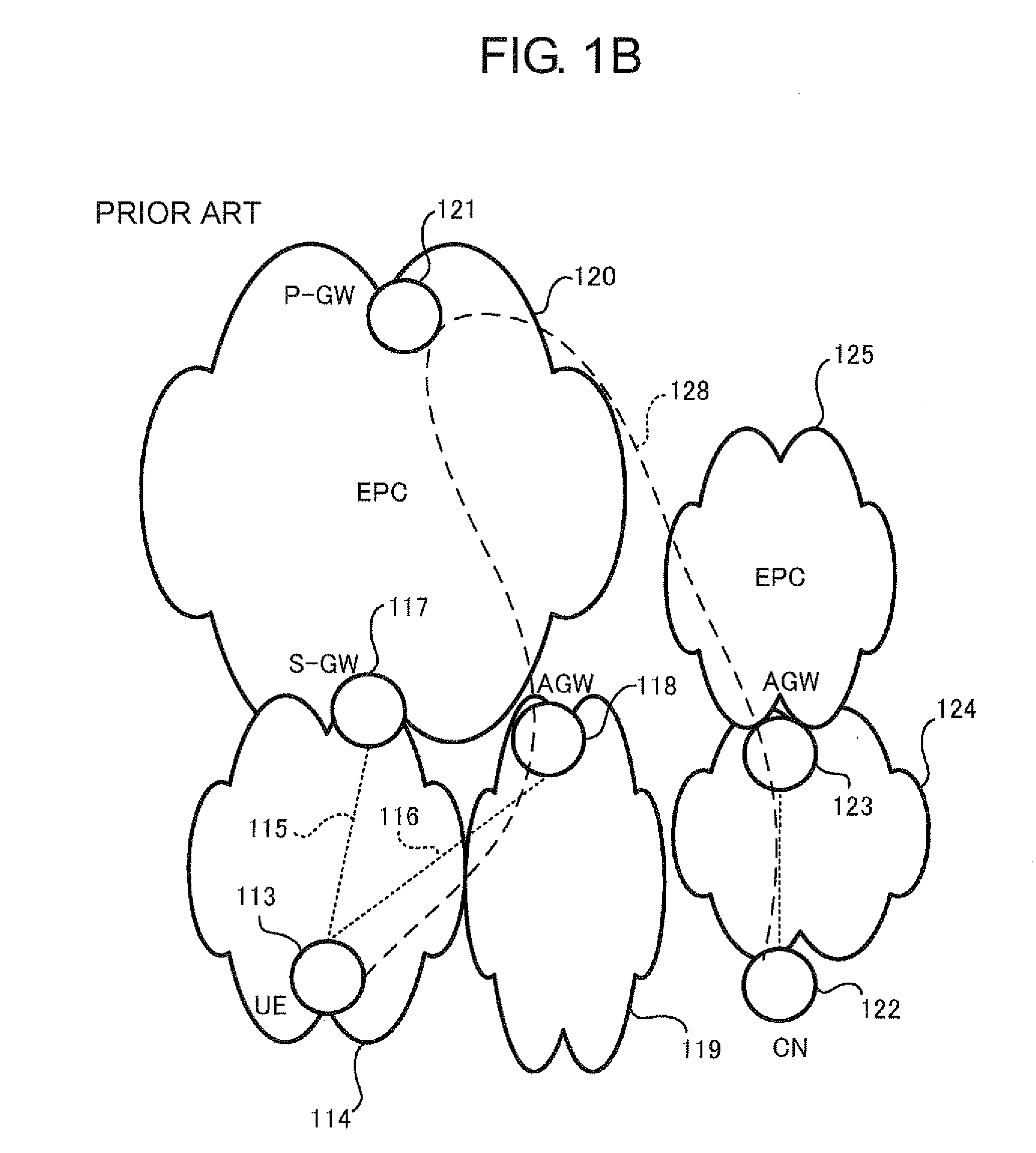Communication system, mobile terminal, network node, and base station apparatus
a communication system and mobile terminal technology, applied in the field of communication systems, can solve problems such as high load of signaling on the radio access network, increased average handoff time at the time of network connection change, and increased end-to-end delay, jitter, and packet loss of media packets
- Summary
- Abstract
- Description
- Claims
- Application Information
AI Technical Summary
Benefits of technology
Problems solved by technology
Method used
Image
Examples
embodiment 1
Concept of the Present Invention in the Case where the CN is in the CMIPv6 Mode
[0140]A scenario where the network entity assists the UE in specifying a proper interface to be used in the case where the CN exists in the same domain is described in Embodiment 1 of the present invention.
[0141]The following describes Embodiment 1 of the present invention with reference to FIG. 3A. In FIG. 3A, a UE 304A has two interfaces. For example, the two interfaces of the UE 304A are a 3G LTE interface connected to an E-UTRAN (Evolved Universal Terrestrial Radio Access Network) 303A and a WiMAX interface connected to a WiMAX access network 302A.
[0142]The UE 304A is connected to a S-GW 305A via an access link 311A, and connected to an AGW 306A via a link 312A. Mobility of the 3G interface of the UE 304A is managed by the PMIPv6 mechanism, whereas mobility of the WiMAX interface of the UE 304A is managed by the CMIPv6 mechanism. The UE 304A exists in its home domain, a home network prefix (HNP) of PM...
embodiment 2
Concept of the Present Invention in the Case where the CN is in the PMIPv6 Mode
[0154]Embodiment 2 of the present invention is described below. Embodiment 2 of the present invention is described using the scenario shown in FIG. 3A, too, though a certain change is made to the mobility management mode of the CN 308A in Embodiment 1 of the present invention described above. In Embodiment 2 of the present invention, it is assumed that the CN 308A is in the PMIPv6 mode. All assumptions other than that the CN 308A uses the PMIPv6 mode are the same as those in Embodiment 1 of the present invention described above, and so their description is omitted here.
[0155]In Embodiment 2 of the present invention too, when the P-GW 316A reports the location of the CN 308A (i.e. that the CN 308A exists in the same domain 300A) to the UE 304A, the UE 304A starts the RR process. To attain the completely optimized path indicated by the message 314A in FIG. 3A, the CN 308A needs to operate in the MIPv6 mode....
embodiment 3
Concept of the Present Invention in the Case where the P-GW is not the Home Mobility Anchor of the CN
[0158]Embodiment 3 of the present invention is described below. Embodiment 3 of the present invention is described using the scenario shown in FIG. 3A, too, though a certain change is made to the assumption about the home agent of the CN 308A in Embodiment 1 of the present invention described above. In Embodiment 3 of the present invention, it is assumed that the home agent of the is CN 308A is not the P-GW 316A. All assumptions other than that the home agent of the CN 308A is not the P-GW 316A are the same as those in Embodiment 1 of the present invention described above, and so their description is omitted here.
[0159]In Embodiment 3 of the present invention, the home agent of the CN 308A is not the P-GW 316A, and the CN 308A operates in the CMIPv6 mode. The CN 308A is about to send data to the UE 304A, and the RR mechanism is already executed for the UE 304A. Accordingly, the UE 30...
PUM
 Login to View More
Login to View More Abstract
Description
Claims
Application Information
 Login to View More
Login to View More - R&D
- Intellectual Property
- Life Sciences
- Materials
- Tech Scout
- Unparalleled Data Quality
- Higher Quality Content
- 60% Fewer Hallucinations
Browse by: Latest US Patents, China's latest patents, Technical Efficacy Thesaurus, Application Domain, Technology Topic, Popular Technical Reports.
© 2025 PatSnap. All rights reserved.Legal|Privacy policy|Modern Slavery Act Transparency Statement|Sitemap|About US| Contact US: help@patsnap.com



